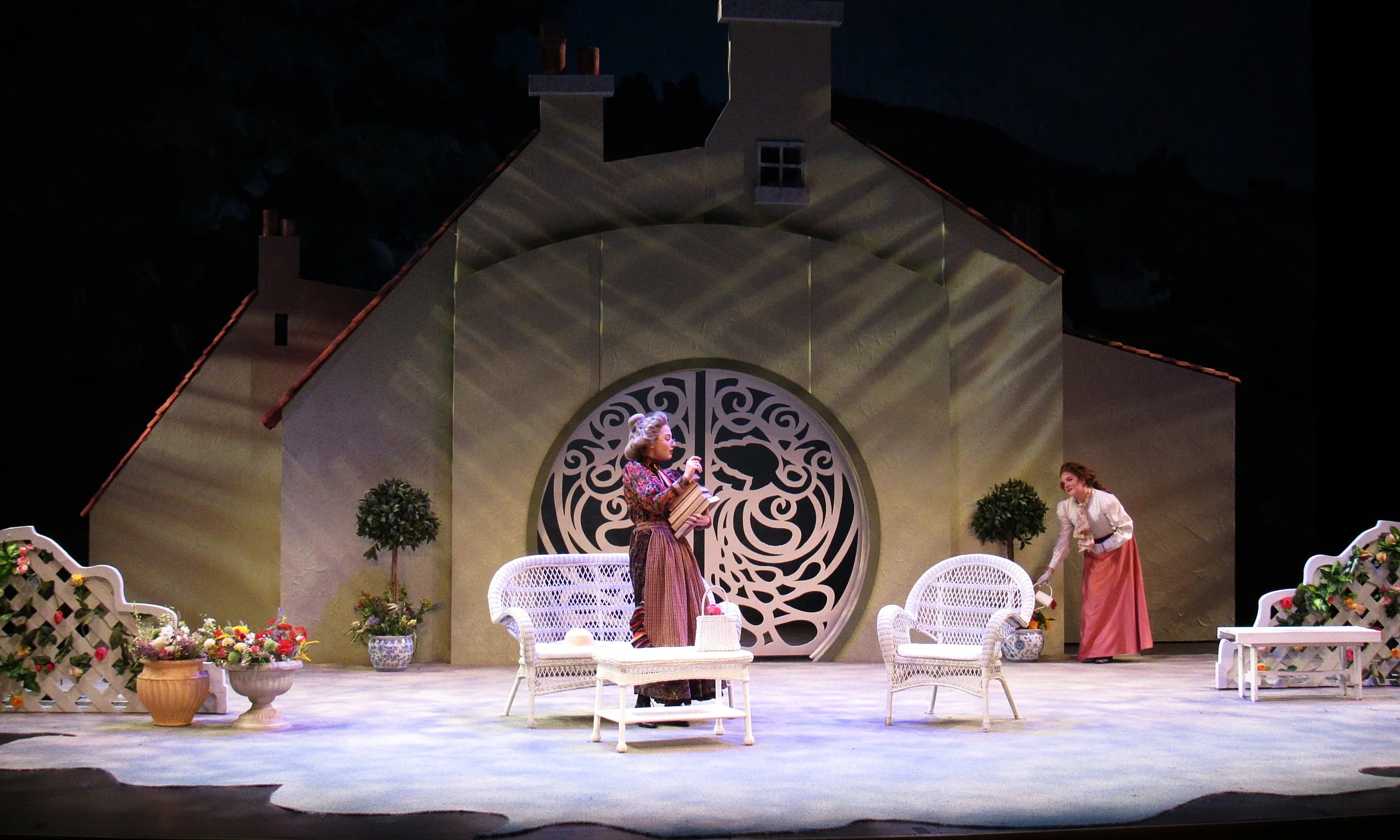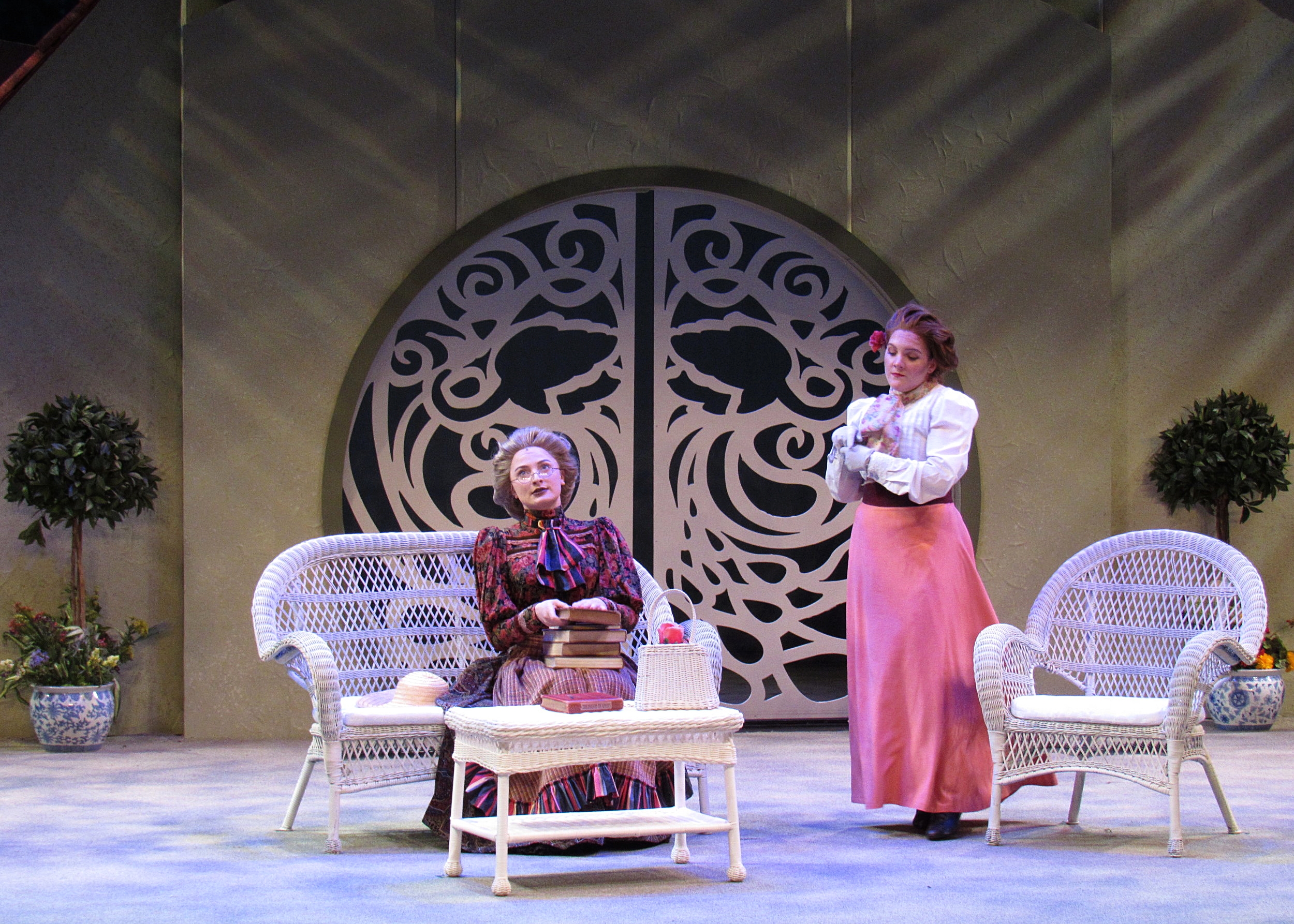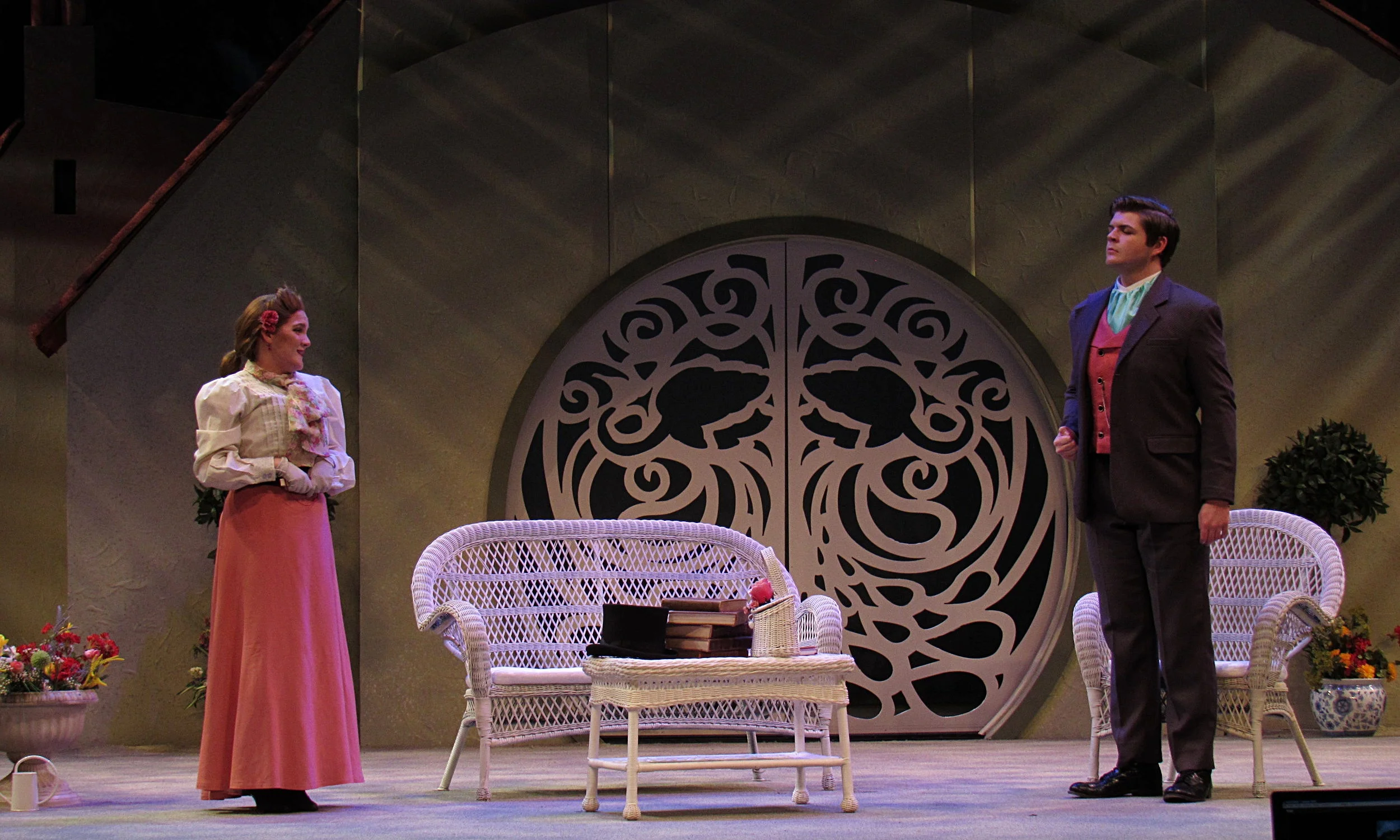

















Ann & Ellen Fife Theatre, Virginia Tech’s Moss Art Center, Spring 2018.
A play by Oscar Wilde
Directed by Patricia Raun
Scenic Design by Stefnie Cerny
Lighting Design by Dylan Bomgardner
Costume Design by Laura Vitale
Charge Artist: Rhi Sanders
Assistant Scenic Artist: Estefania Perez-Vera
Photo by Joseph Fry.

A mixture of light joint compound and water was applied with a pointing trowel to nine wall segments. The texture would go on a gradient of heavy waves to plain coverage, from bottom to top.
Photo by Rhi Sanders.

Three to four different tones of green were used in the walls, having the darkest green on the upstage walls, and the lighter greens on the offstage walls.
Two coats of paint were applied to each wall.
Photo by Rhi Sanders.

A final layer of spatter, using three shades of green, was applied to the walls, adding another more visual texture to them.

To recreate the type of roofing the design required, cardboard tubing was cut to size and shaped into tiles. Rows of them would be overlapped and stapled down to a baseboard of luan, to facilitate their final installation.

Once stapled to the luan, the tiles were covered in one coat of light joint compound, as preparation for their paint treatment.

Once fully dry, the tiles were covered in one coat of terracota, and a final spatter with three lighter and darker tones of red.

As with the walls, the location of the roof tiles determined whether they would receive a lighter or a darker color treatment, which would translate into the tones used for the spatter.
Photo by Rhi Sanders.

To make every item on stage have a uniform aesthetic, some props had to be repainted to the right tone of dark brown. In the case of this table, it had to be sanded first, to get rid of the coat of sealer it already had.

Three tones of brown were wet-blended to create a consistent wood work, with a very sutil grain in cream.